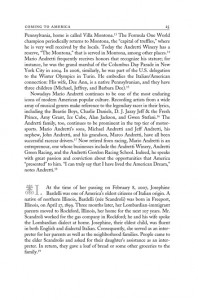Dominic Pulera, a former client (I designed his book Green, White and Red: The Italian-American Success Story a couple of years ago*), sent me a New York Times article, “Selling Books by Their Gilded Covers,” by Julie Bosman, this week. It bears an encouraging message to someone like me, who is in a business that is increasingly being encroached upon by e-books.**
The Arthur H. Clark Company, where I started my career and whose books I happily continue to work on today, built its business on rare and collectible books. As such, their books are very special: in addition to a distinctive design, they use very high-quality materials, such as acid-free paper, nice cloth or leather, and sewn bindings, so that they will not fall apart a hundred years later (literally! The company was founded in 1902.). Clark books are often put out in limited editions, bound in leather, numbered, and signed by the author, which makes them especially attractive to book collectors. I–and the company’s legions of fans–immensely appreciate this attention to detail.
I have continued using these quality materials in other books. An example is the mahogany Arrestox cloth used for the cover of Green, White, and Red–it takes foil stamping on the cover and spine beautifully and comes in a wide array of color choices, so coordinating with the colors on a dust jacket is easy. The cloth also is coated, so it resists tearing and abrading, and does not crumble with age. The book will look beautiful for decades to come (with or without the dust jacket, which don’t hold up as well)!
*This book’s cover features an image from the Library of Congress, whose collection I have previously written about here and here.
**I have no issue with e-books themselves, but rather with the publishers–Amazon, I am looking at you–who are basically selling poorly formatted, undesigned Word documents as books. I have a Kindle (bought so that I could test the e-book files that I created for another client) and definitely see the attraction, and reading designed pages is delightful. The problem, though, is the undesigned files, and the fact that there is no indication of design when buying an e-book from the Amazon store. I was disappointed to buy multiple e-books only to find inconsistent justification (both full justification and ragged right–who does that?), sporadic display fonts, and, unforgivably, widow lines. The main publisher who I do work for sells e-books that are still designed pages, in a PDF format that is low-resolution for on-screen use. Those, of course, are fantastic.

